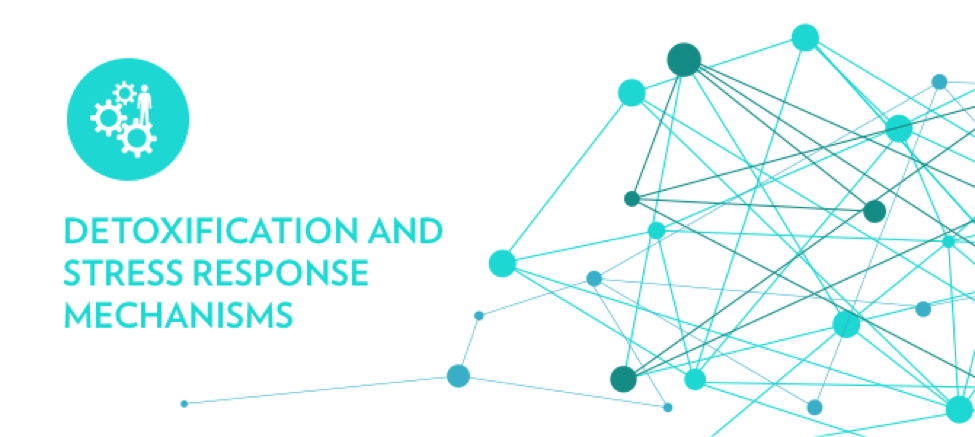Detoxification and Stress Response Mechanisms
September 13, 2017

Detoxification and stress responses are found in tissues and cells throughout the entire body to neutralize and expel cellular toxins, as well as defend against internal threats or stressors. Unfortunately, over time, the function of our detoxification and stress response mechanisms decline or become dysregulated due to several internal and external influences. These mechanisms are also controlled via gene expression. When working optimally, our detoxification and stress response mechanisms work together to oppose the effects of aging.
DETOXIFICATION
While it may be enticing to try some of the extreme diets or intestinal and juice cleanses that have become popular, these fads often have questionable efficacy, and at times can be unsafe. A much better approach would be to support natural detoxification and stress response mechanisms by implementing healthy dietary habits and nutritional supplementation. For example, an important detoxification mechanism is nuclear factor E2-related factor 2 (Nrf2). Nrf2 is a cellular transcription factor that plays a pivotal role in coordinating the antioxidant response, maintaining redox homeostasis and detoxification. Nrf2 activates many different genes that have protective functions for our cells (for example, genes controlling glutathione production). These genes can also play major roles in antioxidant activities and inflammatory balance in the cell.
STRESS RESPONSE
Cellular stress responses can have a significant influence on our mood, behavior, aging, and health. Acute stress is a short-term threat that causes a cascade of changes throughout the body, affecting everything from the nervous and cardiovascular systems to the endocrine and immune systems. Stress hormones such as catecholamines enable us to respond to a real or perceived threat by making immediate energy (among other effects). Increased blood pressure, heart rate, and breathing are a few of the other changes experienced along with an activated immune system. The body typically can respond and recover to acute stressors because of our built-in stress response mechanism, but stress can become damaging if continually activated or uncontrolled. This can lead to fatigue, reduced immune function, reduced mental function, and more. The underlying mechanisms of stress are not all fully understood, but there are some proposed biomarkers of our stress response. One important biomarker is called flow mediated dilation.
FLOW MEDIATED DILATION
When blood flow increases through a vessel, the vessel dilates which has been termed “flow-mediated dilation” (FMD). FMD is an indicator of cardiovascular health, as well as our tolerance to stress. The opposite reaction to dilation is constriction, which can happen when we are exposed to stress and respond poorly. Just like a garden hose that will have increased pressure when pinched or constricted, our blood vessels being constricted will increase blood pressure. Too much constriction or prolonged constriction can have negative health consequences. The good news is that even when we are exposed to stressors and they can’t be eliminated, there are powerful dietary ingredients and lifestyle factors that can help to improve FMD.
MAKING POSITIVE LIFESTYLE CHOICES
There are many mechanisms in the body that influence detoxification and stress. However, more important than knowing all the ways in which our detoxification and stress response mechanisms are designed to work is our ability to make dietary choices or lifestyle changes to support these important aging defense mechanisms. Even being a little more active, along with getting adequate rest and getting certain nutrients, has been shown to provide healthier detoxification and stress responses.
To learn more about your body’s natural defenses against aging aggressors, visit Introduction to Aging Defense Mechanisms (ADMs).

Written by:
Tanner Gibb
Technical Communication & Education Manager
Pharmanex
YOU MIGHT ALSO LIKE:



